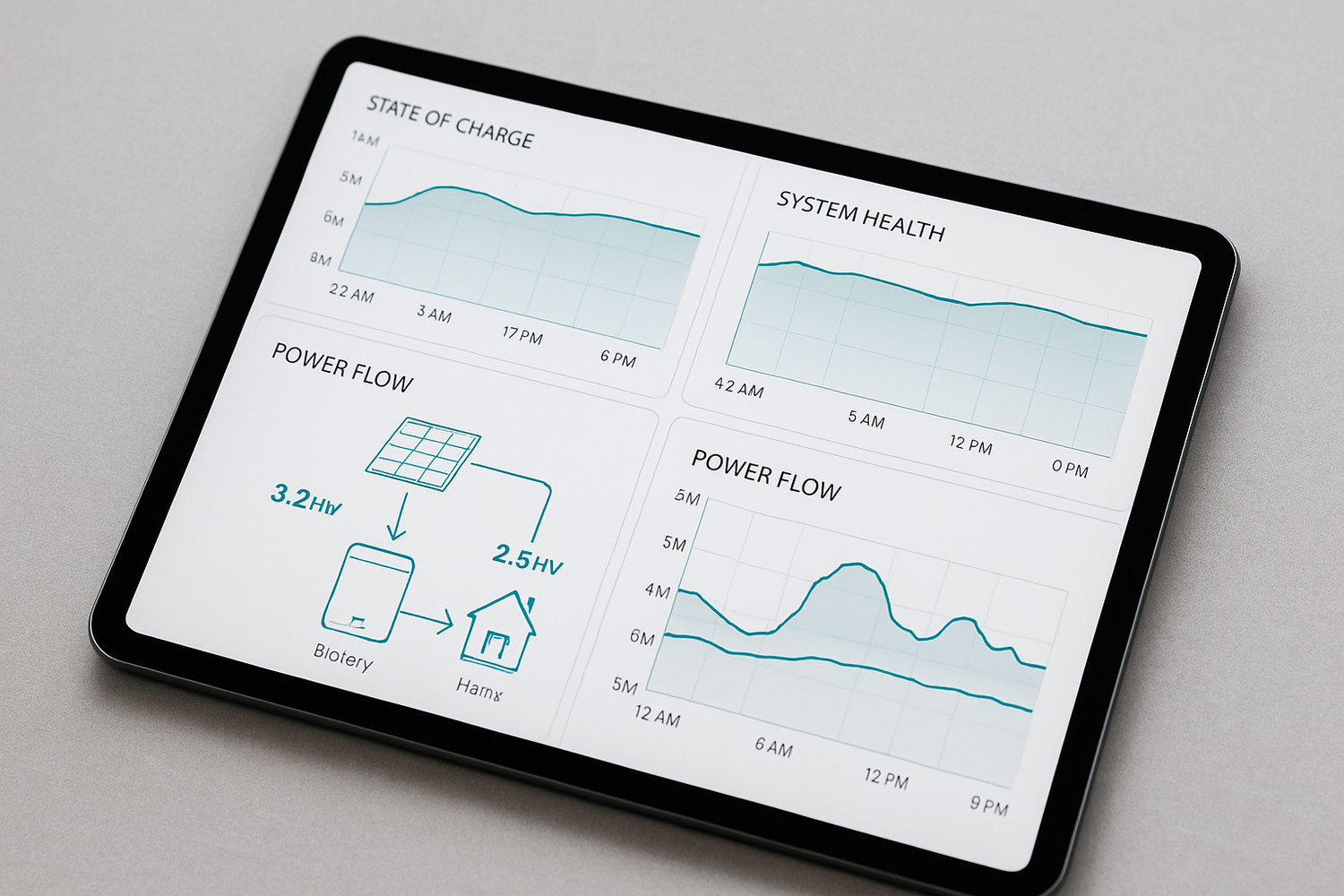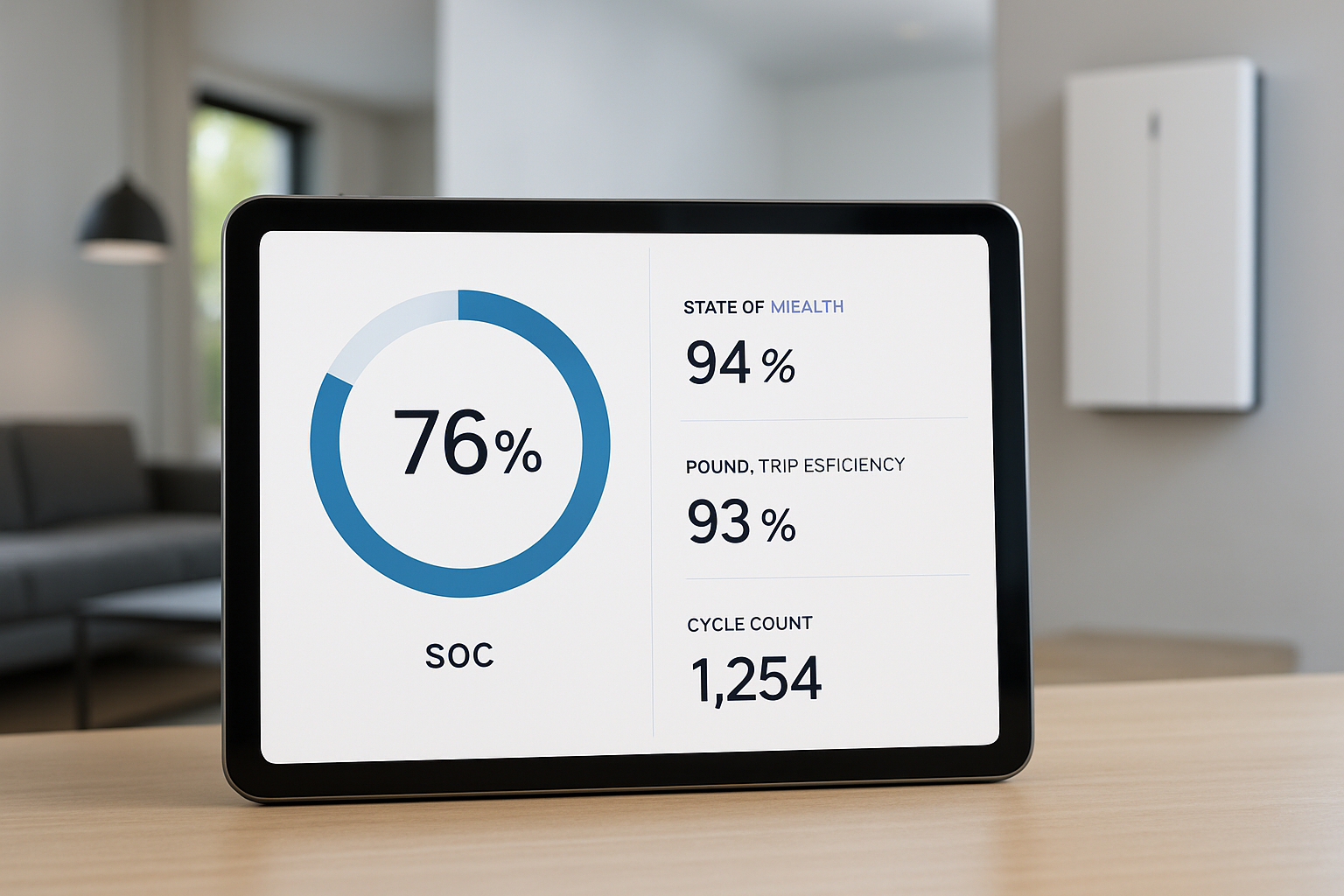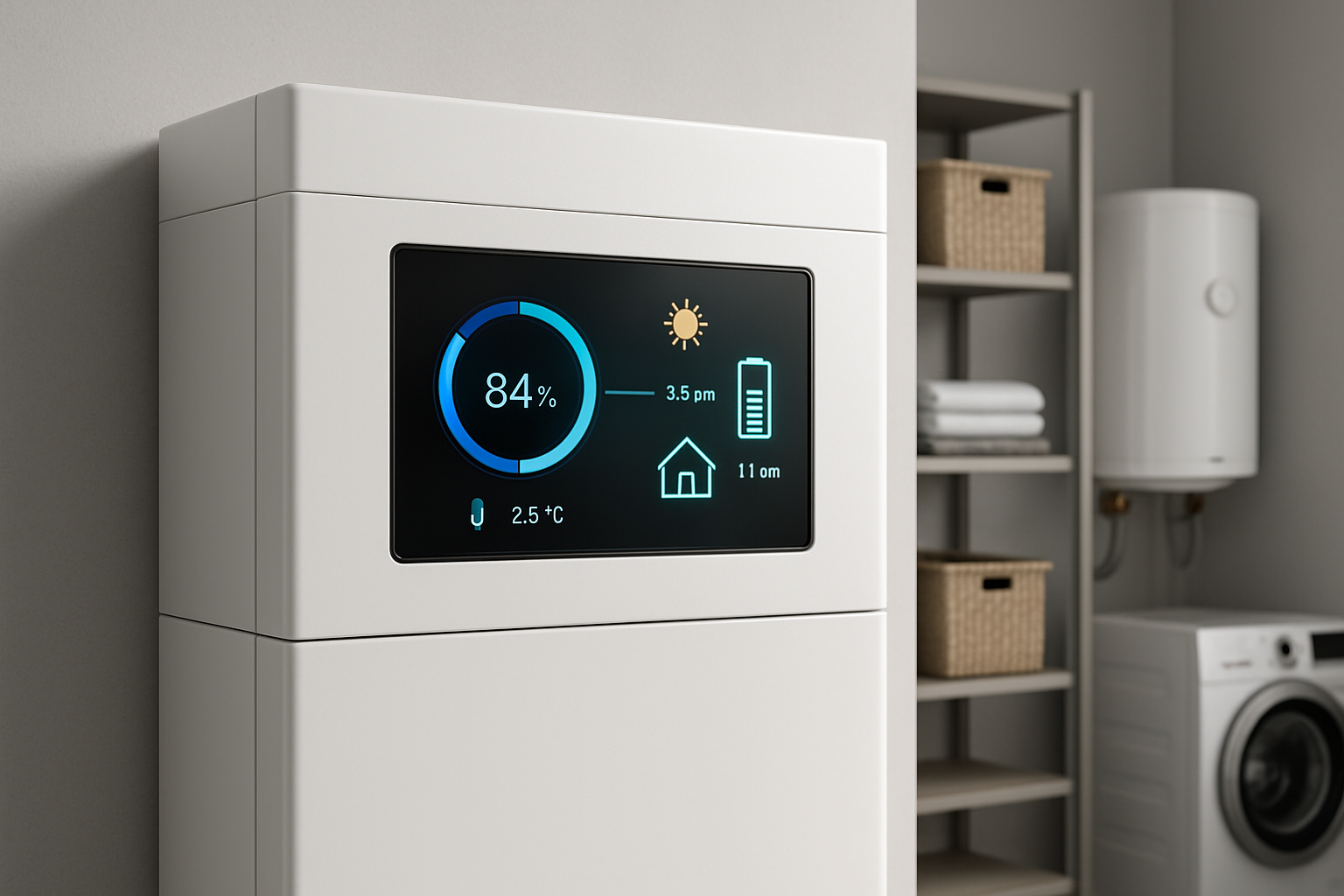A solar energy storage system is a significant step toward energy independence. To ensure it operates at peak performance and delivers a strong return on investment, diligent system monitoring is not just beneficial—it's necessary. Effective monitoring of your hybrid system performance protects the longevity of your components, maximizes efficiency, and ensures safety. However, several common oversights can undermine these benefits, leading to reduced performance and unexpected costs.
Mistake 1: Ignoring State of Charge (SoC) and State of Health (SoH)
Two of the most critical metrics for any lithium-ion solar battery are its State of Charge (SoC) and State of Health (SoH). Misunderstanding or ignoring them is a frequent misstep.
Misinterpreting State of Charge (SoC)
SoC represents the current charge level of your battery, like a fuel gauge. The mistake is treating it as a simple percentage without context. Accurate SoC readings depend on factors like ambient temperature and the load currently on the system. For instance, a battery's ability to deliver power can be lower in cold weather, even if the SoC reads high. A robust Battery Management System (BMS) is essential for providing an accurate SoC, which prevents harmful overcharging or deep discharging. Maintaining an ideal SoC, often between 20% and 80%, can significantly extend the battery's operational life.
Neglecting State of Health (SoH)
SoH is a long-term measure of your battery's condition relative to its original capacity. A new battery starts at 100% SoH, which gradually declines with each charge and discharge cycle. Failing to track SoH means you have no visibility into the battery's degradation rate. This oversight can lead to a sudden drop in performance and leave you unprepared for a necessary replacement. Monitoring SoH helps in predicting the battery's remaining useful life and scheduling maintenance proactively.
Mistake 2: Focusing Solely on Real-Time Data
While real-time data provides a valuable snapshot of your system, relying on it exclusively can be misleading. A comprehensive approach to monitoring solar energy storage requires historical context.
The Lack of Historical Context
Observing that your system generated 15 kWh today is useful. But how does that compare to a sunny day last month or last year? Without historical data, it's nearly impossible to identify gradual performance degradation. A slow decline in output could signal issues like panel soiling, component aging, or shading from new obstructions. Tracking performance over time provides the context needed to spot these subtle but significant changes.
Overlooking Predictive Analysis
Modern monitoring platforms use historical data to forecast future energy production and identify potential anomalies. According to a report from the National Renewable Energy Laboratory, effective monitoring should report on systems producing lower-than-forecasted energy on a weekly or monthly basis. As detailed in the ultimate reference for solar storage performance, analyzing trends allows for proactive maintenance, ensuring small issues are addressed before they become major problems. This data-driven approach is fundamental to optimizing the long-term value of your system.
Mistake 3: Inadequate Inverter and Component Monitoring
A solar energy storage system is more than just panels and batteries. The inverter and other components are just as critical to its overall function, yet they are often overlooked in monitoring strategies.
The Inverter as the System's Brain
The hybrid inverter converts the DC electricity from your solar panels and battery into AC electricity for your home. It's the operational hub of your system. Monitoring only the battery and panels is a significant error. You should also track the inverter's efficiency, internal temperature, and error logs. An overheating or inefficient inverter can throttle your entire system's output and pose a safety risk. Many modern inverters come with built-in monitoring capabilities that can alert you to potential issues.
Ignoring Balance of System (BOS) Components
Components like wiring, fuses, and connectors are part of the Balance of System (BOS). While they may not have direct digital monitoring, their health can be inferred from other data points. For example, a sudden voltage drop between the panels and the inverter could indicate a corroded connection or damaged wire. Regular physical inspections, combined with careful data analysis, can help ensure these essential parts are functioning correctly.
Mistake 4: Using Generic or Mismatched Monitoring Software
Not all monitoring software is created equal. Using a generic, one-size-fits-all platform for a specialized hybrid system can lead to inaccurate data and missed opportunities for optimization.
Compatibility is Key
Your monitoring software must be fully compatible with your specific hardware, including the battery chemistry (like LiFePO4), inverter model, and other components. Generic software may not interpret the proprietary data protocols from your equipment correctly, leading to flawed readings for SoC, SoH, and performance. This can result in improper charging cycles that actively harm your battery.
Poor User Interface and Alerting
Even with the right data, a poorly designed user interface can make it difficult to understand what's happening with your system. If alerts for critical issues are not configured properly or are easily missed, the monitoring system fails its primary purpose. A quality monitoring platform should present data clearly and allow for customizable alerts for events like low battery levels, high inverter temperature, or a loss of grid connection.
Mistake 5: Disregarding Environmental Factors
Your solar energy storage system doesn't operate in a vacuum. Environmental conditions, particularly temperature, play a massive role in its performance and longevity.
The Critical Impact of Temperature
Extreme temperatures are a primary enemy of battery health. High temperatures can accelerate the degradation of battery components, permanently reducing capacity and shortening lifespan. Conversely, very low temperatures increase a battery's internal resistance, which reduces its available capacity and ability to charge effectively. An effective monitoring strategy must include tracking both ambient and battery temperatures. This data helps ensure that ventilation and cooling systems are working correctly and can alert you if temperatures fall outside the optimal operating range, which is often between 20-25°C (68-77°F).
Soiling and Shading on Panels
The performance of your energy storage is directly linked to the input from your solar panels. Dust, pollen, bird droppings, and other debris can accumulate on panels, significantly reducing their output. Likewise, new shading from growing trees or nearby construction can impact energy generation. Monitoring panel output and comparing it to historical, weather-adjusted data can help you determine when the panels need cleaning or if a new shading issue has emerged.
Mistake 6: Setting Unrealistic Performance Baselines
Establishing a proper performance baseline is essential for accurately measuring your system's health over time. Many system owners make the mistake of setting it and forgetting it.
Not Accounting for Normal Degradation
All lithium-ion batteries experience some level of degradation over time. It's a natural process. A common mistake is to benchmark performance against the system's day-one output indefinitely. This approach will inevitably lead to false alarms as the system ages naturally. A proper baseline should account for a gradual, expected decline in performance as specified by the manufacturer. The goal is to identify *accelerated* degradation, which signals a problem, not the expected aging process.
Failing to Calibrate the System
Over time, the sensors and algorithms that calculate SoC can drift, leading to inaccuracies. Periodically performing a calibration cycle—a full charge followed by a controlled discharge and recharge—can reset the system's baseline. This ensures that the SoC and other metrics remain accurate, providing a reliable foundation for your monitoring efforts.
Mistake 7: Neglecting Cybersecurity
As solar energy storage systems become smarter and more connected, cybersecurity becomes a critical aspect of monitoring and management that cannot be ignored.
The Risk of Connected Systems
Many monitoring systems connect to the internet to provide remote access and data logging. While convenient, this connectivity can create vulnerabilities. The U.S. Department of Energy highlights that as more solar systems are connected to the grid and the internet, the potential for cyberattacks increases. Unauthorized access could allow malicious actors to disrupt your system's operation or access your data.
Weak Password and Firmware Practices
A common security failure is using the default passwords supplied with monitoring hardware. These are often publicly known and provide an easy entry point for attackers. It is crucial to change all default passwords to strong, unique ones. Additionally, manufacturers periodically release firmware updates to patch security vulnerabilities. Neglecting to install these updates leaves your system exposed to known threats. Ensuring your system is secure is a vital part of responsible system monitoring.
Achieving True Energy Independence
Effective monitoring of your solar energy storage system is about more than just watching numbers on a screen. It requires a holistic and proactive approach. By avoiding these seven common mistakes, you can ensure your system operates efficiently, safely, and reliably for years to come. This diligence transforms your investment into a robust solution for achieving true energy independence, giving you control over your power and peace of mind.
Frequently Asked Questions
How often should I check my solar storage system's performance?
While automated systems monitor performance in real-time, it's good practice for you to review the data weekly or bi-weekly. This allows you to spot trends or anomalies that automated alerts might not catch. A more thorough review of historical performance should be done monthly or quarterly.
What is the most critical metric to monitor?
For daily operation, the State of Charge (SoC) is most critical to manage your energy usage. For long-term asset health and financial planning, the State of Health (SoH) is the most important metric, as it indicates the battery's remaining lifespan and overall condition.
Can I upgrade my monitoring system on an existing installation?
Yes, in many cases, you can upgrade the monitoring capabilities of an existing system. Many advanced monitoring solutions and smart battery management systems can be retrofitted to older installations. This can provide deeper insights and better control over your hybrid system performance.





Leave a comment
All comments are moderated before being published.
This site is protected by hCaptcha and the hCaptcha Privacy Policy and Terms of Service apply.